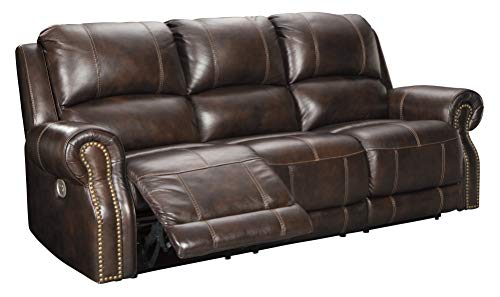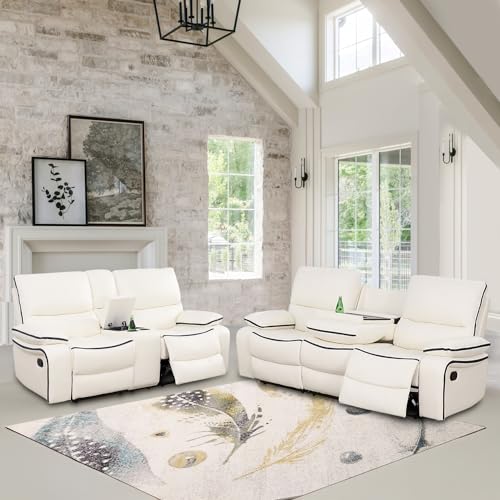What's The Current Job Market For Genuine Leather Sofa Professionals?

2024-09-14 12:58
17
0
본문
How to Spot a Genuine Leather Sofa
With a soft, buttery leather upholstery this sofa looks fantastic in any room. Customers love its simple styling, and the high-quality genuine leather upholstery.
However, distinguishing real leather from fake leather can be a challenge to the untrained eye. Here are six tips to help you differentiate between the two: 1. Rough edges.
1. Labels are important
Real leather is difficult to duplicate. It has a distinctive feel and look. It's also durable, easy to clean, and doesn't soak up excess body oils. This makes it perfect for those suffering from allergies. However, not all leather sofas are made equally. Some stores have even been famous for using PVC as genuine Leather.
Understanding the different types leather can help you avoid being ripped off. This includes determining the difference between full grain and top grain leather, as well as evaluating the quality of the upholstery material. Retailers with discerning eyes are more than pleased to provide this information So don't hesitate ask!
The first step to identifying authentic leather sofas is to look at the label. It should clearly state what type of leather the sofa is upholstered with, along with any other material such as cotton or fabric. In addition, reputable sellers must have clear policies for return or exchange in case you're dissatisfied with your purchase.
If the sofa doesn't have an identifier but you can figure out the authenticity of the sofa by examining the fabric backing or opening up a cushion casing to check for synthetic materials. You can also check the texture of the leather to see if there are any bumps or imperfections. These are indicators that the leather is fake or has been bonded.
Another way to test the authenticity of a sofa is by the surface of the sofa by rubbing your fingers. Genuine leather has an incredibly soft and smooth texture, whereas faux leather couch leather or bonded leather will be rougher and feel more like suede. Furthermore, you should be able to discern the difference between bumps and wrinkles of genuine leather and the patterns printed on faux leather.
A genuine leather sofa is more expensive than a faux counterpart, but it's going to last longer. It can become an heirloom for the family over time. You can minimize the damage that's caused by sun as well as ozone, heat and humidity by placing your leather sofa in a cool, dark area away from heaters, fireplaces and air conditioning. Leather protection creams can also be used to keep your leather sofa strong and supple.
2. Look at the back
If the label does not indicate what kind of leather is present in the sofa, it is essential to examine it close. The smell, the feel, and the backing are all unmistakable indicators.
 When you touch the surface of genuine leather, it will not feel perfectly smooth. This is due to the fact that animal hides have a variety of pores that allow them to breathe. However, a product that feels completely smooth could be fake leather.
When you touch the surface of genuine leather, it will not feel perfectly smooth. This is due to the fact that animal hides have a variety of pores that allow them to breathe. However, a product that feels completely smooth could be fake leather.
Be aware of bumps and uneven surfaces. The process of preparing genuine leather requires buffing, which takes away some of the rough outer skin. However, if the material you use to cover your sofa is made of top-quality leather, it should still have some bumps.
You can also test the leather by putting your finger into it and running it over it. If the leather is genuine it will stretch and wrinkle like human skin. This allows the leather to breathe, and stops it from becoming dry or cracking as time passes.
Faux leather is uniform in pattern because it's printed, however genuine leather will have imperfections that add to the beauty and durability of the leather. This includes scratches, creases and scuffs. A quality leather sofa will be supple and slightly stiff when new, but it shouldn't crack or dry out over time if it is regularly maintained with a specific leather protection cream.
To save money, some furniture manufacturers use a combination of real and synthetic leather to make their products. The 'contact areas', such as the arm rests, seats and backs, are constructed from genuine leather, while the non-contact parts, such as the base and the outside arms, are upholstered with the less expensive polyurethane or a synthetic leather. Even if the sofa is labelled as genuine leather, you should take a close look at the backing to determine if it's genuine leather.
Labels and prices can help you determine if a sofa is genuine leather It is however important to look it over. Examine the back of the sofa for any signs of polyurethane which indicates that it's not genuine leather.
3. Take a look at the seat

With a soft, buttery leather upholstery this sofa looks fantastic in any room. Customers love its simple styling, and the high-quality genuine leather upholstery.
However, distinguishing real leather from fake leather can be a challenge to the untrained eye. Here are six tips to help you differentiate between the two: 1. Rough edges.
1. Labels are important
Real leather is difficult to duplicate. It has a distinctive feel and look. It's also durable, easy to clean, and doesn't soak up excess body oils. This makes it perfect for those suffering from allergies. However, not all leather sofas are made equally. Some stores have even been famous for using PVC as genuine Leather.
Understanding the different types leather can help you avoid being ripped off. This includes determining the difference between full grain and top grain leather, as well as evaluating the quality of the upholstery material. Retailers with discerning eyes are more than pleased to provide this information So don't hesitate ask!
The first step to identifying authentic leather sofas is to look at the label. It should clearly state what type of leather the sofa is upholstered with, along with any other material such as cotton or fabric. In addition, reputable sellers must have clear policies for return or exchange in case you're dissatisfied with your purchase.
If the sofa doesn't have an identifier but you can figure out the authenticity of the sofa by examining the fabric backing or opening up a cushion casing to check for synthetic materials. You can also check the texture of the leather to see if there are any bumps or imperfections. These are indicators that the leather is fake or has been bonded.
Another way to test the authenticity of a sofa is by the surface of the sofa by rubbing your fingers. Genuine leather has an incredibly soft and smooth texture, whereas faux leather couch leather or bonded leather will be rougher and feel more like suede. Furthermore, you should be able to discern the difference between bumps and wrinkles of genuine leather and the patterns printed on faux leather.
A genuine leather sofa is more expensive than a faux counterpart, but it's going to last longer. It can become an heirloom for the family over time. You can minimize the damage that's caused by sun as well as ozone, heat and humidity by placing your leather sofa in a cool, dark area away from heaters, fireplaces and air conditioning. Leather protection creams can also be used to keep your leather sofa strong and supple.
2. Look at the back
If the label does not indicate what kind of leather is present in the sofa, it is essential to examine it close. The smell, the feel, and the backing are all unmistakable indicators.
 When you touch the surface of genuine leather, it will not feel perfectly smooth. This is due to the fact that animal hides have a variety of pores that allow them to breathe. However, a product that feels completely smooth could be fake leather.
When you touch the surface of genuine leather, it will not feel perfectly smooth. This is due to the fact that animal hides have a variety of pores that allow them to breathe. However, a product that feels completely smooth could be fake leather.Be aware of bumps and uneven surfaces. The process of preparing genuine leather requires buffing, which takes away some of the rough outer skin. However, if the material you use to cover your sofa is made of top-quality leather, it should still have some bumps.
You can also test the leather by putting your finger into it and running it over it. If the leather is genuine it will stretch and wrinkle like human skin. This allows the leather to breathe, and stops it from becoming dry or cracking as time passes.
Faux leather is uniform in pattern because it's printed, however genuine leather will have imperfections that add to the beauty and durability of the leather. This includes scratches, creases and scuffs. A quality leather sofa will be supple and slightly stiff when new, but it shouldn't crack or dry out over time if it is regularly maintained with a specific leather protection cream.
To save money, some furniture manufacturers use a combination of real and synthetic leather to make their products. The 'contact areas', such as the arm rests, seats and backs, are constructed from genuine leather, while the non-contact parts, such as the base and the outside arms, are upholstered with the less expensive polyurethane or a synthetic leather. Even if the sofa is labelled as genuine leather, you should take a close look at the backing to determine if it's genuine leather.
Labels and prices can help you determine if a sofa is genuine leather It is however important to look it over. Examine the back of the sofa for any signs of polyurethane which indicates that it's not genuine leather.
3. Take a look at the seat



댓글목록0
댓글 포인트 안내